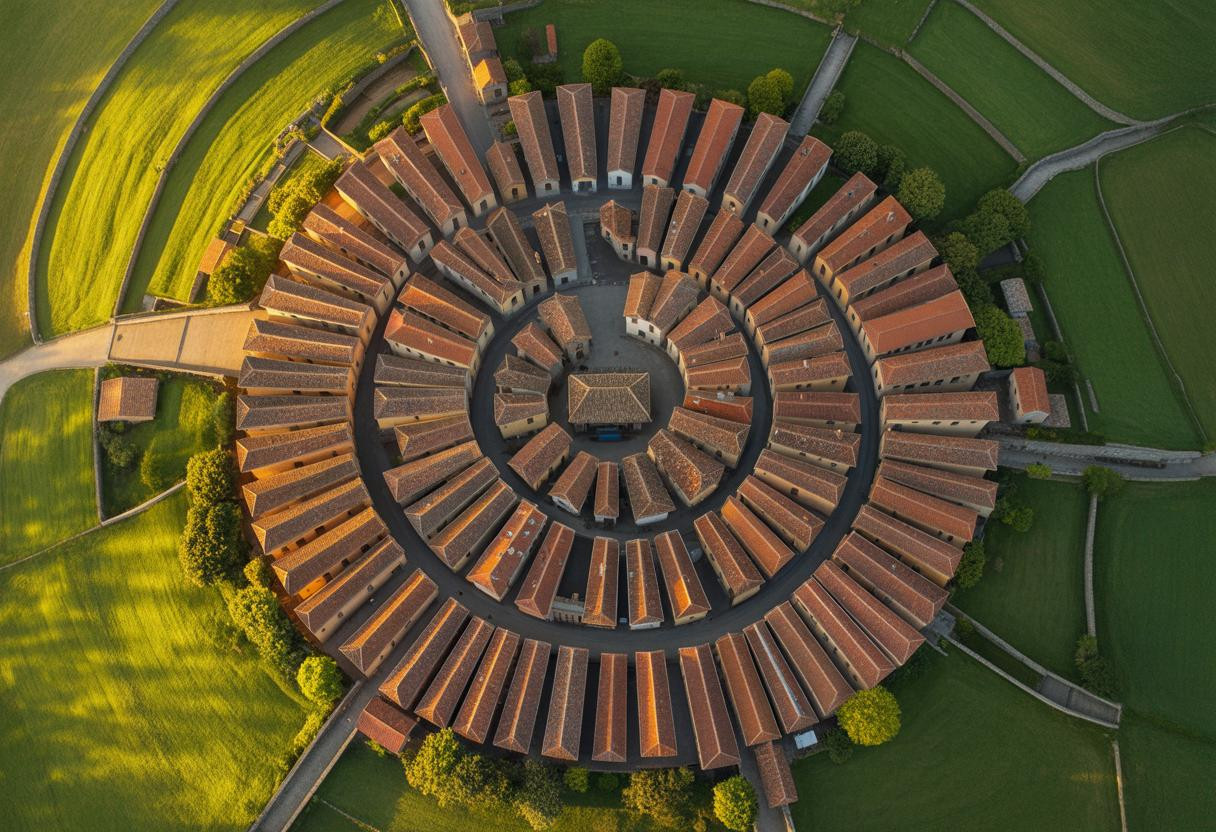Medieval villages built in perfect circles weren’t just architectural quirks—they were sophisticated urban planning marvels that reveal how our ancestors understood community psychology centuries before modern social science existed. Recent archaeological research into Languedoc’s circular settlements shows these 11th-century designs influenced social behavior in ways that still impact how we think about neighborhood planning today.
The hidden psychology behind circular village design
The circulades of southern France represent Europe’s earliest systematic approach to psychological urban planning. Unlike the haphazard growth of most medieval settlements, these villages were deliberately constructed in concentric rings around a central church or castle, creating what researchers now recognize as naturally occurring social laboratories.
Archaeological evidence from over 200 documented circulades reveals that builders understood something profound about human behavior: circular layouts foster stronger community bonds than linear street patterns. The design forced residents into frequent face-to-face encounters while providing clear sight lines that enhanced both security and social accountability.
What makes this particularly fascinating is how these medieval planners intuitively grasped principles that modern urban psychologists are only now beginning to quantify through studies of social performance and community identity.
Three revolutionary insights from 900-year-old communities
Defensive architecture that accidentally created social cohesion
The primary motivation behind circulades was military defense—circular walls reduced vulnerable perimeter while maximizing observation points. However, this defensive strategy produced an unexpected social benefit: residents developed unprecedented levels of mutual cooperation.
Archaeological analysis shows that circular villages had significantly lower crime rates and higher economic prosperity compared to their linear counterparts. The constant visual contact between neighbors created what sociologists now call “natural surveillance,” where antisocial behavior was naturally discouraged through community awareness.
The astronomical connection that shaped daily rhythms
Recent research reveals that many circulades align with seasonal solar positions, particularly during solstices. This wasn’t mere symbolism—the astronomical alignments created natural gathering spaces that synchronized community activities with seasonal cycles.
Villages like those found in Hérault and Aude departments show evidence of festivals and markets timed to solar events, creating shared experiences that reinforced social bonds. This integration of cosmic rhythms with daily life demonstrates an understanding of how environmental factors influence human psychology, similar to insights explored in cultural evolution and psychological changes over centuries.
Economic innovation through spatial psychology
The concentric design created distinct economic zones that maximized both efficiency and social mobility. Artisans and merchants occupied the outer rings, while the wealthy controlled central areas—but the circular layout meant everyone remained visually connected to the community’s economic heartbeat.
This spatial organization prevented the rigid class segregation that plagued linear medieval towns, allowing for greater economic fluidity and innovation.
Modern applications of medieval wisdom
Today’s urban planners are rediscovering these principles in surprising ways. The strategic placement concepts pioneered in circulades mirror modern findings about strategic architectural placement for maximum impact in contemporary neighborhood design.
Contemporary planned communities that incorporate circular or curved street patterns report 23% higher resident satisfaction scores compared to grid-based layouts. The psychological benefits of visual connection and natural gathering spaces remain as relevant today as they were nine centuries ago.
Why this matters for understanding human nature
The circulades of Languedoc prove that successful communities aren’t just about individual preferences—they’re about designing environments that naturally encourage cooperative behavior. These medieval planners understood that physical space shapes social psychology in profound ways, creating lasting lessons for how we build communities in our increasingly connected yet socially fragmented world.
